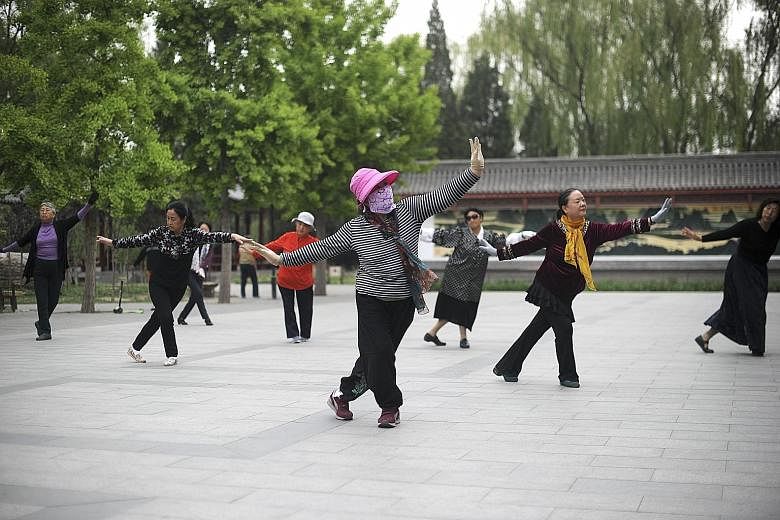BEIJING • Unlike many of her peers who spend their days looking after grandchildren and hanging out in parks, retiree Yang Suxia, 64, leads a dance troupe in northern China's Tangshan, Hebei province, that has some 80 members.
This year, Ms Yang's team, Carnation, is scheduled to participate in 100 events.
More than half of these events are provincial or national-level contests attended by thousands of middle-aged women, more commonly known as dama.
"Competition brings out the best in us. Square dancing gives us elderly people an incentive to get up every morning, and competitions provide us with a reason to keep dancing," said Ms Yang, who created the troupe in 2001 with seven neighbours and colleagues.
The Looking For China's Most Beautiful Queen Of Square Dancing competition is one of the largest of its kind in the country.
The competition, which lasts for almost half a year, has more than 35,000 dancers from 25 provinces taking part in it.
Carnation finished third in the competition.
-
180m
-
Estimated number of active square dancers in China as of the end of last year.
Square dancing in China first started to gain popularity in the 1990s. Today, the activity has become so popular that it has even been considered a sport in China. Last year, square dancing was for the first time included in China's National Games.
The General Administration of Sport estimated that there were 180 million active square dancers in China as of the end of last year.
This popularity has also translated into business opportunities for many enterprises.
At the first Square Dance Development Forum, which took place in November in Hainan province, Mr Peng Qiang, founder and chief executive of WYZ Sports, called square dancers "walking wallets" during a public speech that addressed the business potential of the industry.
"In China, dancing grannies are usually the accountants of their household. Reaching them means reaching the bank accounts of the millions of families in the country," Mr Peng explained to the American edition of China Daily in a phone interview.
Established at the end of 2016, Mr Peng's Beijing-based agency links sporting activities with corporate sponsorship.
Last year, WYZ Sports helped 20 clients sponsor more than 40 sports - half of which were marathons. More than 500 marathons were held across the country last year, each attracting a sponsorship of more than 5 million yuan (S$1 million).
He noted that while square dancing is unlikely to reach the size and business value of marathons in China, the activity does have its own appeal.
"Square dancing has the clearest and most precise participant profile - middle-aged and elderly Chinese women," said Mr Peng, who added that healthcare companies, beauty salons and banks selling financial investment products make up the lion's share of sponsors for square dancing contests in China.
He noted that the sponsorship amounts could rise in future.
China is home to the world's fastest-growing ageing population, and 480 million people aged above 60 would account for about 35 per cent of the total population by 2050, local media reported.
CHINA DAILY/ASIA NEWS NETWORK

